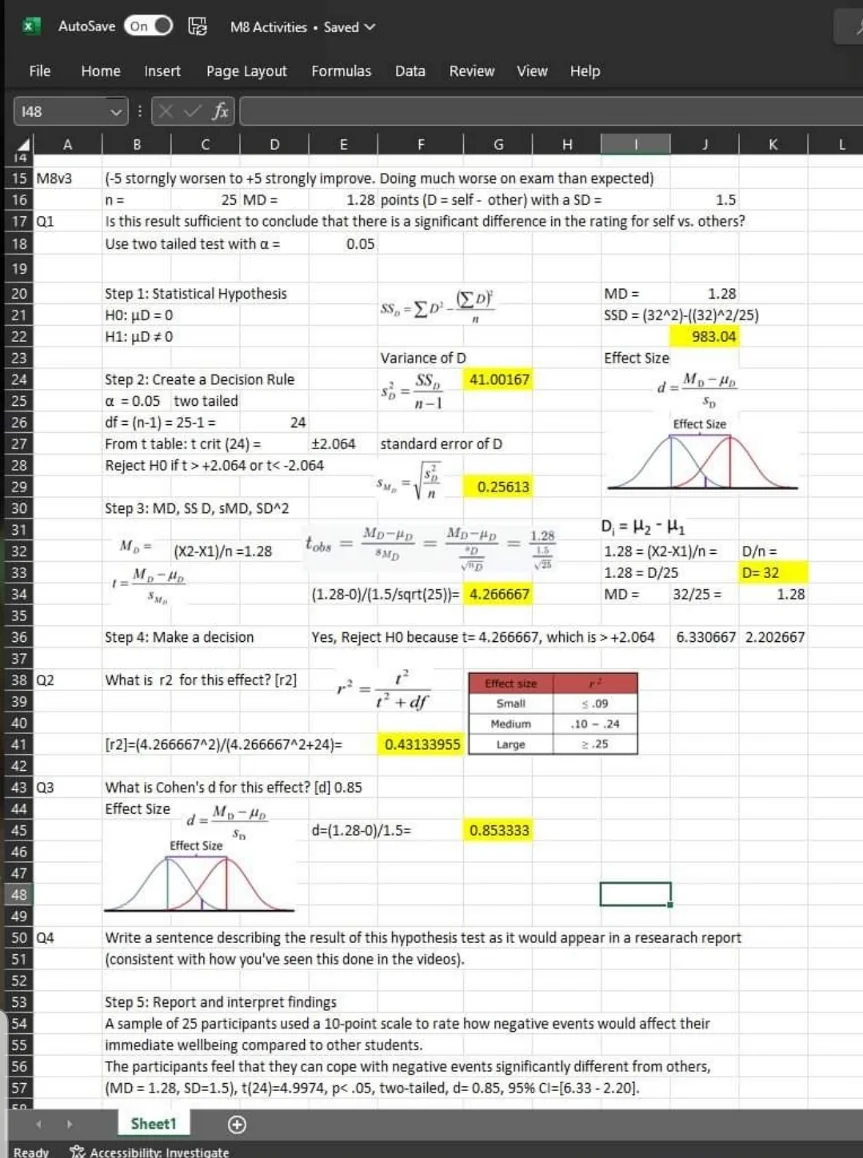🧭 Study Tips for This Class
This course will require different study skills than some other courses do. We will review these during the first section.
✍ Study Tip: Plan ahead for the more challenging lectures - The first two lectures of the course and the first two lectures on stock are significantly easier than the following lectures.
- Budget extra time for the third and fourth lectures of the class!
- When he starts covering stocks, take advantage of the lighter weeks on stocks to do the reading for options. Options are an exciting topic, but also very challenging - the readings can help you keep up!
“Option Basics” on-line tutorials (Access requires free registration with the CBOE)
Course Overview
I like to organize the lectures into 4 “Units” (plus an introductory and review lecture).
Legend: 🏖 refers to an easier week (still fascinating). ⭐ refers to a more challenging week. The number of sections each week is completely flexible. If you want more or fewer, I’m happy to adjust… just ask!
- Introduction
- Lecture 1 - Introduction 🏖 (1 section)
- Unit 1: Monetary Policy
- Lecture 2 - Banks
- Lecture 3 - Money Multiplier ⭐
- Lecture 4 - Federal Reserve 1
- Lecture 5 - Federal Reserve 2
- Unit 2: Present Value and Bonds
- Lecture 6 - Net Present Value (NPV) and Internal Rate of Return (IRR) (1-2 sections)
- Midterm Exam (after the midterm, try to start the reading for the options lecture)
- Lecture 7 - Bonds (1-2 sections, try to finish the reading for the options lecture)
- Unit 3: Stocks
- Lecture 8 - Stocks (part 1) (1 section)
- Lecture 9 - Stocks (part 2) (1 sections)
- Lecture 10 - EMH and CAPM (2 sections)
- Unit 4: Derivatives
- Lecture 11 - Options ⭐ (2-3 sections)
- Lecture 12 - Options Strategies ⭐ (2-3 sections)
- Lecture 13 - Futures (2 sections)
- Review
- Lecture 14 - Review Week (2 sections)
✍ Study Tip: Plan ahead for the more challenging weeks - Some weeks are significantly easier than the weeks that follow them. For example, the first two weeks of the course are significantly easier than the following two weeks and the first two weeks of stocks are significantly easier than the following three weeks (especially the two weeks on options, which can creep up on you). If you’re prepared, it’s no problem, but don’t get caught off guard!
Study Schedule
Following a study schedule is very helpful in this class. It is centered around each lecture. (Some students learn economics much more easily than others, so you may not need to follow all of the steps below.)
- [Lecture] Your weekly schedule starts by attending lecture or watching it as soon as possible. Take notes by hand, jotting down notes about questions you want to ask me. See below for note-taking tips. (2 hours)
- [After watching the lecture]. (20 minutes)
- The most important thing you can do to increase your performance is to become an active learner rather than a passive learner. This stage is where you become an active learner.
- Identify objectives for your studying this week. Do you see the big picture of what Bruce was trying to communicate? If not, be sure to email me. Which slides (if any) were confusing?
- Briefly cross-reference with the slides as necessary. Bruce typically posts slides the evening of the lecture. I typically post my condensed slides the following morning. Please email me if we miss these deadlines!
- Email me questions. I answer all content questions during the following section so everyone can hear the answers. Please send them to me at the email address provided in your syllabus (rob.mgmte2000@gmail.com - Bruce and I hate Canvas). Describing the slide Bruce is covering or pasting in a screenshot can quickly provide context. More information on how to take a screenshot across platforms can be found here: https://www.take-a-screenshot.org/
- [Sections] - the goal is to be prepared to solve the key questions that could be on the homework.
- [Review the Slides before starting the Problem Set] (40 minutes)
- Try to get to the point where, for each slide in the deck, you could quickly, correctly, and confidently explain the slide to someone else. Can you work through the examples from class starting with a blank sheet of paper? These two things are your baseline.
- The time you spend on this will be more than made up for by the time you save on the problem sets and studying:
- You won’t waste time searching through the slides, your notes, or the textbook, because you’ve already reviewed them in an organized and relaxed manner.
- You’ll save time during exam prep and get a better grade, remembering more after the class is over.
- Recognizing the slides being tested will help you avoid time wasting wrong turns. When I read an problem set or exam problem in this course, it usually takes me less than five seconds to identify which slides are being tested. Likewise, you want to be able to recognize the concepts and slides that are being tested. This can also help you avoid taking a “wrong turn at Albuquerque:”

- In economics, you can’t really understand problem set questions until you’ve learned the ideas that they are based on. Attempting to answer a question without fully understanding the nuances of that question sadly causes many students waste a great deal of time. You don’t want to fall into this trap! If a student thinks that a given question “doesn’t make sense,” chances are, they’ve skipped this step and therefore took a “wrong turn at Albuquerque.” While finding your way back after taking a number of wrong turns is an important if painful part of a technical education, overall, it’s far better to avoid being like Bugs and instead, read the instructions before you start traveling. For us, that means carefully reviewing the slides and your notes before starting the problem set. That way, you recognize what is being tested, properly interpret the question, and don’t waste time or emotional energy completing it.
- Following this process will help you achieve things that otherwise might not be possible.
- Put key results on a formula sheet that you can use during the exams and for the homework. Possibly even put key examples from the slides on the formula sheet.
- Attempt each problem in the problem set. When you get stuck, send a question. I choose my section times so you will have time to review the slides, work the problem set, and do readings over the weekend.
- Do the readings if that’s a good match for your study style.
- Go to Section2 (Tuesday).
- Finish homework.
- Congratulations!
General Tips
- Know the level that he wants you to understand
- Watch our language. If you speak like we speak, you’ve understood it.
- Use the slides to assess mastery. Can you explain the slides to someone else? Why is he including this slide?
- Study groups
- Don’t get “study group disease”
- Rewatching lectures after you have done the homework.
- Tutoring
One final thought from Snoop: http://robmunger.com/snoop
🙋 Can you recommend any outside resources?
✔️ Generally, I find these to be more trouble than they are worth. Over the years, Bruce has built a completely self-contained course, so that all you need to know is what he covers in his lectures. Outside resources may simpler, more complex than, or even completely unrelated to what Bruce introduces in class. Therefore, the formulas, concepts, definitions and examples that you find elsewhere may not be correct in this course.
The most important things you can do for success in this course is to follow the weekly schedule and the tips listed above.
Studying for the exam
Studying for the exam is about Balance. There are three parts:
- Master the concepts (40%)
- In a Watson course, it can be surprisingly helpful to review the lecture after you’ve done the homework (ie when preparing for the exam). Students often catch nuances that they didn’t catch the first time through.
- Can you explain the slides fluently and with confidence and without referring to other sources.
- Practice the problem sets (40%)
- I have reposted them. Can you do them quickly without referring to your notes.
- For each problem, you want to be able to think about the slides that the problem was based on. If you can’t do that, return to step a.) (Master the concepts)
- Mop up (20%)
Student Perspective
🙋 As for E1010, I think really drilling down on the conceptual stuff was the most difficult. Also, I was taking HBS CORe simultaneously so I didn’t study as much as I’d like to. Prior to E1010, I’ve only taken ECON E-10, my first economics class ever this life, so jumping from E10 to Microeconomics was a leap in addition to HBS CORe at the same time. I’d suggest really understanding each one of the PS problems thoroughly for Microeconomics. Keep reviewing and keep going back until it becomes intuitive thinking. And your Rob Sections helped a ton— Definitely attend them all if possible. Time management is vital. For Microeconomics I’d suggest this weekly: Bruce lecture 2hr, Rob sections 4-5hr, self study + PS 2hr. So it is an investment of a total of 6-7hr a week, if not more. I personally wish I had more. I also wish I had the Excel proficiency at that point (Spring 2022) to do the same PS organization in Microeconomics. I was still old school pen and paper taking notes and doing PS’s and it was much slower for sure.You are welcome to pass on my email and this information to future students. Happy to help!
Excel

The student quoted above also wrote, “I fully utilized Excel for both E2000 and E1920 PS’s. I’d make a sheet for each PS and make them very organized. … Organization in Excel is key, which I learned from you.”

Note-Taking
Tutoring - I encourage you to think of me as your personal tutor.
Sections start out with more structured presentations and they get less structured over the course of the meeting. At the end, I’ll say something like, “Okay, this is the end of the official section. Now it is ‘Office Hours.‘” During office hours, please treat me as your personal tutor. I will stay until the last question is asked.
- Can we do a practice question on XYZ.
- Can you explain the following slides (or provide intuition or tell us why it matters or how it is applied).
✍ Study Tip: Plan ahead for the more challenging weeks
- Some weeks are significantly easier than the weeks that follow them. If you’re prepared, it’s no problem, but don’t get lulled into a sense of complacency, or you’ll be caught off guard when the harder material comes!
- Lectures 1 and 2 are significantly easier than lectures 3 and 4. I suggest getting ahead during the easier weeks by completing Module 0 and actively studying the material, so when the harder weeks arrive (with problem set to work on), you can focus on the new material. Be prepared for a more intense section schedule during the harder weeks - you’ll need it!
- The first two lectures on Stocks are easier than the last lecture on stocks and much easier than options, so proactively study the earlier material and be prepared for a more intense section schedule. Most importantly, take advantage of the lighter weeks on stocks to do the reading for options. The two lectures on options are probably the most challenging lectures in the course. Click through the “Lecture 10 - Options” link above for specific tips.
Special tips for “On Demand Online”
If you are taking this as an “On Demand Online” course, you may find it helpful to participate live in sections - but it’s up to you! Whatever works the best for you is fine.
Thanks again!
(An email from a student who took a live course as an ‘On Demand Online’ course because of her schedule. Because there are so many live avenues for support, it worked out very well for her. I hope you find it encouraging. Shared with permission.)
Closing
✏ If the student’s time estimate, above, is accurate, you’ll spend hours on this class. Let’s be well organized to make sure you spend it as efficiently as possible. We are more likely to achieve our goals if we actively consider realistic objectives that match our personal situation, background, abilities, beliefs, goals, constraints, etc.
Please take 2 minutes to write down realistic goals for how you would like to study for this course. I won’t ask anyone what they have written or ask anyone to share their list, but if anyone has anything to share afterward, your classmates could learn as much from benchmarking against a classmate as they will learn from me. Perhaps we could start a quick conversation about it. If so, let’s keep it super real for everyone’s benefit.
Realistically, what weekly schedule would you like to follow? What steps can you take today to help ensure your success in this? (Talk to people in your life, mentally set aside time, etc?) Do you want to learn Excel? If so, how will you? What are your thoughts on note taking?

Feedback? Email rob.mgmte2000@gmail.com 📧. Be sure to mention the page you are responding to.